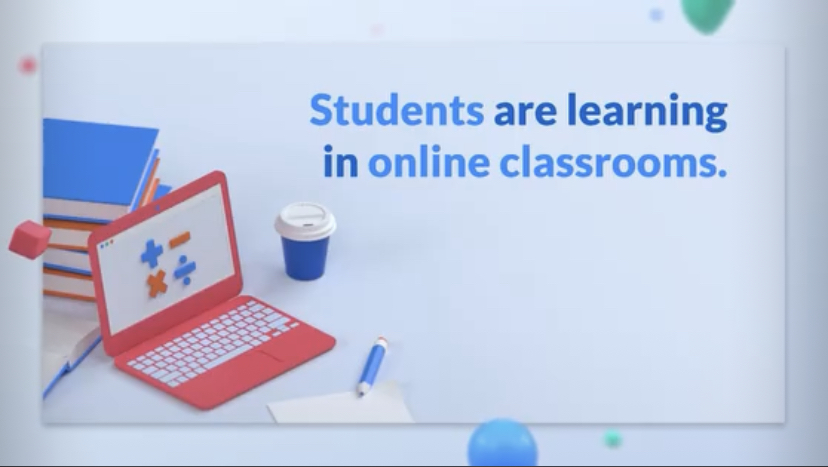MCPS must shift to virtual learning
Photo courtesy of @zoom on Instagram.
With the use of Zoom, MCPS teachers were able to host daily classes virtually. This helped protect the safety of staff and students while still engaging in learning.
February 25, 2022
Flashback to March 2020. As the severity of COVID-19 set in, the entire world was in a panic, and no one, especially the school systems, knew what to do. However, with the start of the 2020 school year last fall, schools had developed concrete plans to continue educating America’s youth while also preserving the health and safety of students, staff, teachers and their families through remote learning.
COVID-19 has not gone away, and with the background needed to smoothly transition to virtual learning, MCPS should switch to virtual learning for the foreseeable future.
This past fall, schools across the country returned to “normal school,” in-person with masks and extra safety measures in place. While many students were pleased to get back to the education system that they were used to, others dreaded returning to long school days filled with tests, piles of homework and countless days spent working into the late hours of the night.
With cases dramatically increasing across the country due to the new COVID variant, Omicron, the debate between in-person and virtual school is stronger than ever. With many parents and students begging MCPS to take action and return to online school, the Board of Education is currently considering numerous factors in order to make the decision of whether specific schools should stay in-person or transition to virtual learning for a 14-day period.
A new study reported in Medical News Today “revealed that the reopening of schools resulted in a higher number of COVID-19 cases and deaths in counties with hybrid or in-person teaching than in those with remote learning.”
The number one priority is ensuring the health and safety of students, staff and their families. With cases in MCPS increasing every day and more and more students and staff having to quarantine for days, schools are left with a shortage of staff, and students are left at home with little to no resources to stay up to date with their work and obtain the education that they need. With these factors in mind, the need for a transition to remote learning is evidently clear.
While virtual learning has many benefits, the most obvious advantage is the ability for students to improve their sleep schedules. Picture this: you are startlingly awakened from your blissful sleep by the blare of your alarm at 6:30 in the morning. Dragging yourself out of bed you prepare for a day at school filled with yawns and tired eyes. According to the Sleep Foundation, “teens who don’t get enough sleep tend to suffer from excessive drowsiness and lack of attention that can harm their academic performance.”
During last year’s virtual school year, the first period did not start until nine in the morning, giving students multiple hours of extra sleep every single day. Despite the fact that if schools transition to virtual learning they will still follow the normal bell schedule, most students will save at least an hour of sleep from not having to get ready for and commute to school every morning.
Today’s school system is structured around the idea of learning to take tests that assess your knowledge of the information that you learn in class. While this is a seemingly good intention, with the pressure for students to get perfect grades in order to get into top colleges, especially at WCHS, most students choose to memorize facts and cram before tests in order to get high scores.
Most people who prefer the format of virtual school to in-person argue that they enjoy the ability to use their time more efficiently and have more control over the structure of their day. With looser deadlines and assignment structures, students were able to map out their weeks, work at their own pace and complete their work in various ways. While some choose to space out their work and complete a small amount every day, others chose to spend one or two days completing all of their work for the week so that after Zoom lessons, they could have the rest of the day free.
While some may argue that this vague structure was hard for them to manage, this relatively “independent” format of learning mimics the style of both college and the workforce, where it is important to utilize time management skills and planning to make sure that all of your work gets completed on time.
The largest issue regarding virtual learning is the lack of social interaction for students. However, with modern technology such as FaceTime and texting, teens are able to communicate with their friends and stay in touch. Additionally, many students chose to attend “school” at each others’ houses, sitting at a table together logged into Zoom classes.
While the pros and cons of virtual and in-person learning can be debated back and forth, MCPS needs to realize that the number one priority lies in protecting the health of the members of the community. With cases rising at rapid rates, the safest decision would be to transition to virtual learning for the time being. If students continue testing positive for COVID, the idea of in-person learning will be a distant memory.




